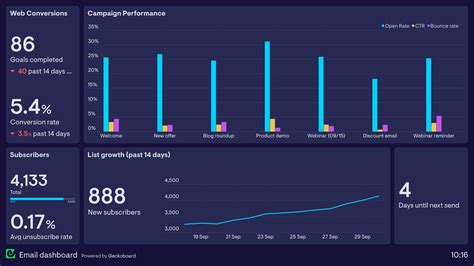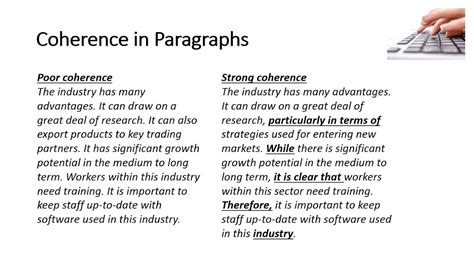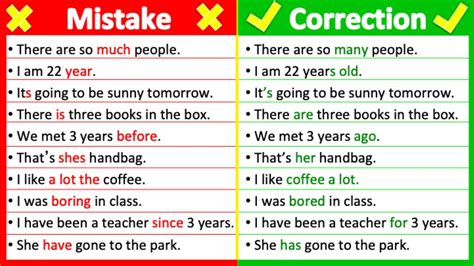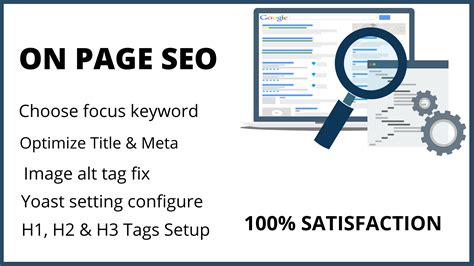Engaging customers and driving sales has always been a challenge for businesses. In today's fast-paced digital era, effective email marketing campaigns have emerged as a powerful tool to establish strong connections with your target audience. With the right strategies, your emails can become a dynamic platform to convey your business message, nurture relationships, and build brand loyalty.
Your email content plays a pivotal role in captivating your recipients' attention. To make your emails stand out from the cluttered inbox, it is essential to craft compelling and persuasive messages. Grabbing your readers' attention requires a delicate balance of creativity and professionalism.
Utilizing a captivating subject line is your first step towards achieving success. A well-crafted subject line will entice your recipients to open and engage with your email. Avoid generic phrases and opt for personalized and intriguing subject lines to spark curiosity. By highlighting the value proposition or offering an exclusive deal, you can pique your readers' interest and convince them to explore further.
The body of your email holds the key to converting your readers into potential customers. Keep it concise yet informative, ensuring that your content aligns with your recipients' expectations. Use clear and concise language, diving straight into the purpose of your email. Whether you are promoting a new product, sharing valuable insights, or delivering updates, provide relevant and valuable information in a concise format.
Understanding Your Target Audience

The foundation of a successful email marketing campaign lies in understanding your target audience. By gaining deep insights into the preferences, behaviors, and needs of your audience, you can create highly personalized and engaging email content that resonates with them.
Identify and segment your audience: Begin by conducting thorough market research to identify the different segments within your target audience. Divide them based on demographics, interests, or buying behaviors. This segmentation allows you to tailor your email content to specific groups, increasing the chances of connecting with your audience on a personal level. |
Understand their pain points: Delve deeper into understanding the challenges and pain points of your target audience. Identify the problems they face and the solutions they are seeking. By addressing these pain points in your email campaigns, you position yourself as a valuable resource and build trust with your audience. |
Analyze past interactions: Utilize data from previous email campaigns to gain insights into how your target audience has interacted with your content. Identify patterns and trends in their behaviors, such as open rates, click-through rates, and conversion rates. This analysis helps you understand what types of content or offers resonate best with your audience. |
Use surveys and feedback: Engage directly with your target audience through surveys or feedback forms to gather valuable information about their preferences, interests, and expectations. This firsthand feedback allows you to cater to their needs effectively and make necessary adjustments in your email marketing strategy. |
Monitor social media engagement: Keep a close eye on social media platforms to understand the conversations, trends, and discussions related to your industry or niche. Monitor what your target audience is saying, their interactions, and the content they engage with. This real-time observation provides valuable insights for crafting email content that aligns with their interests and current preferences. |
By thoroughly understanding your target audience, you can create email marketing campaigns that are highly relevant, impactful, and drive meaningful results. Tailoring your content to their needs and preferences ultimately fosters stronger connections and increases the likelihood of conversions and customer loyalty.
Crafting Irresistible Subject Lines that Capture Attention
When it comes to creating impactful email marketing campaigns, one of the most crucial elements is crafting attention-grabbing subject lines. The subject line acts as the gateway to your email, determining whether it gets opened or instantly deleted. This section focuses on effective strategies to create subject lines that pique the curiosity of recipients and increase open rates.
| 1. Captivate with Compelling Language |
|---|
| The choice of words in your subject line can make a world of difference. Instead of using generic or clichéd phrases, opt for powerful and persuasive language that evokes emotions. For instance, incorporating action verbs, creating a sense of urgency, or using intriguing adjectives can entice recipients to click open. |
| 2. Personalize for Relevance |
|---|
| Personalization is key to grabbing attention in a crowded email inbox. By addressing recipients by name or tailoring subject lines based on their specific preferences or past interactions, you can establish a sense of relevancy and increase the likelihood of them engaging with your email content. |
| 3. Create a Sense of Exclusivity |
|---|
| Everyone loves to feel special, and leveraging this human desire can be a potent technique in subject line crafting. By offering exclusive deals, sneak peeks, or limited-time offers, you can make recipients feel like they are part of an exclusive group, thereby compelling them to open your email to learn more. |
| 4. Harness the Power of Curiosity |
|---|
| Humans are naturally curious beings, and leveraging this curiosity can be an effective strategy to captivate recipients. Crafting subject lines that tease or hint at something intriguing, without giving away too much information, can create a sense of anticipation that encourages recipients to open your email to satisfy their curiosity. |
| 5. Keep it Short and Concise |
|---|
| In a world where attention spans are shrinking, it's crucial to keep subject lines short and to the point. Ideally, subject lines should be no longer than 50 characters to ensure maximum impact. By getting straight to the point and avoiding unnecessary fluff, you increase the chances of recipients quickly grasping the essence of your email and opening it. |
By following these strategies for crafting attention-grabbing subject lines, you can significantly enhance the effectiveness of your email marketing campaigns. Remember, a captivating subject line is the first step towards achieving higher open rates and driving engagement with your audience.
Personalizing Your Emails for Increased Engagement

Creating a strong connection with your audience is key to running a successful email marketing campaign. One effective way to achieve this is by personalizing your emails. Personalization allows you to tailor your messages to fit the unique interests and preferences of each subscriber, resulting in higher engagement rates and improved business results.
1. Segment your email list: By dividing your email list into smaller segments based on criteria such as demographics, behavior, or purchase history, you can send more targeted and relevant content to each group. This approach ensures that your subscribers receive information that is specifically tailored to their needs and interests.
2. Use dynamic content: Dynamic content allows you to insert personalized and relevant information directly into your email templates. This can include the recipient's name, location, or even their past interactions with your brand. By dynamically customizing your content, you can create a more individualized experience for each subscriber, increasing the chances of engagement.
3. Craft personalized subject lines: Your email subject lines are the first impression your subscribers get of your email. By using their name or referencing their recent activity, you can catch their attention and increase open rates. Experiment with different personalized subject lines to see which ones resonate best with your audience.
4. Implement triggered emails: Triggered emails are automated messages that are sent based on specific actions or events. By setting up triggers such as abandoned cart reminders, welcome emails, or birthday greetings, you can create highly personalized experiences for your subscribers. These emails can lead to increased engagement as they target individuals at the right time with the right message.
5. Test and analyze: Continuously test and analyze the effectiveness of your personalized email campaigns. Pay attention to metrics such as open rates, click-through rates, and conversions to see which personalization strategies yield the best results. Use this data to refine and improve your email marketing efforts over time.
In conclusion, personalizing your emails is an effective strategy to boost engagement and get closer to your subscribers. By segmenting your list, using dynamic content, crafting personalized subject lines, implementing triggered emails, and conducting analysis, you can create meaningful and personalized email experiences that resonate with your audience and drive success for your business.
Creating Compelling and Responsive Email Designs
In today's digital landscape, it is crucial for businesses to create email designs that captivate the attention of recipients and effectively convey their message. Engaging and visually appealing email designs can significantly enhance the success of an email marketing campaign. This section will delve into the key strategies and principles for creating compelling and responsive email designs.
1. Craft a Clear and Concise Message
When designing an email, it is essential to communicate your message in a concise and straightforward manner. Utilize clear and engaging language to ensure that recipients understand the purpose of the email immediately. Avoid lengthy paragraphs or jargon that might confuse or bore the reader. Optimize the use of bullet points and short sentences to deliver your message effectively.
2. Utilize Eye-Catching Visuals
Visual elements play a crucial role in capturing the attention of recipients. Incorporating high-quality images, infographics, or videos can instantly make your email more visually appealing and engaging. However, it is crucial to strike a balance and avoid overwhelming the reader with excessive visuals. A minimalist design approach can often be more effective in conveying your message.
3. Ensure Mobile Responsiveness
In today's mobile-dominated society, it is imperative to optimize your email designs for mobile devices. A significant percentage of email opens occur on smartphones or tablets, and a non-responsive design can lead to a poor user experience. Ensure that your email design adapts seamlessly to different screen sizes and resolutions, making it easy for recipients to read and interact with the content.
4. Use Compelling Call-to-Action Buttons
A well-designed call-to-action (CTA) button can significantly increase the click-through rate of your email. The CTA should be visually distinct, using contrasting colors and compelling copy to entice recipients to take the desired action. It is also crucial to strategically place the CTA within the email, ensuring it stands out and is easily accessible.
5. Test and Optimize
No email design is perfect from the beginning. It is essential to test different design elements, layouts, and variations to determine what resonates best with your target audience. A/B testing can provide valuable insights into which designs generate higher engagement and conversion rates. Continuously optimize your email designs based on the data collected to maximize the efficiency and success of your email marketing campaigns.
By following these strategies for creating compelling and responsive email designs, businesses can establish effective communication channels with their audience, increase open and click-through rates, and drive desired actions. Remember, the success of an email marketing campaign lies in crafting engaging designs that resonate with recipients and deliver your message effectively.
Optimizing Email Content for Mobile Devices

In today's fast-paced digital world, mobile devices have become an integral part of our daily lives. It is crucial for businesses to optimize their email content to ensure a seamless experience for mobile users. Ignoring mobile optimization can result in a poor user experience, decreased engagement, and lower conversion rates.
When it comes to creating email content that works well on mobile devices, there are several key factors to consider. First and foremost, it is important to prioritize simplicity and clarity in your email design. Mobile screens are smaller, so ensure that your layouts are clean and uncluttered. Use concise and compelling subject lines that encourage recipients to open the email, and keep your email copy concise and to the point.
Another essential aspect of optimizing email content for mobile devices is ensuring that it is easily scannable. Mobile users often skim through emails, so use headings, subheadings, and bulleted lists to break up the text and make it easier to digest. This way, even with a quick scan, the key message of your email can still be understood.
| Tip 1: | Consider using a responsive email template that automatically adjusts the layout and font sizes to fit different screen sizes. This will ensure that your email looks great on any device. |
| Tip 2: | Optimize your images for mobile devices by compressing them and ensuring they are of the appropriate size. Large images can slow down loading times and negatively impact the user experience. |
| Tip 3: | Avoid using complex or large fonts that may be difficult to read on smaller screens. Stick to standard web-safe fonts and ensure that the font size is legible without zooming in. |
| Tip 4: | Use a clear call-to-action (CTA) that is easy to click on mobile devices. Make sure your buttons or links are big enough and have enough spacing around them to prevent accidental clicks. |
| Tip 5: | Test your email on different mobile devices and email clients to ensure it renders correctly. What may look great on one device or email client may appear distorted or broken on another. |
By following these optimization techniques, you can ensure that your email content is visually appealing, easy to read, and action-oriented on mobile devices. This will enhance the overall user experience, increase engagement, and ultimately drive better results for your email marketing campaigns.
Enhancing Campaign Performance through A/B Testing
Optimizing the performance of your email marketing campaigns is crucial for achieving desired results. One effective strategy to improve campaign performance is implementing A/B testing, a technique that allows you to compare the performance of different versions of your email content or design. By split-testing various elements, you can gain insights into what resonates best with your target audience and make data-driven decisions to enhance your campaigns.
Through A/B testing, you can explore different variables that may impact the success of your email marketing efforts. These variables may include subject lines, email copy, call-to-action buttons, visuals, or even the layout of your emails. By creating two or more versions of your email, each with a single variable variation, you can measure which version generates higher open rates, click-through rates, and ultimately, conversions.
To conduct an A/B test effectively, it is essential to define a clear objective for the test. Whether you aim to increase open rates, drive more clicks, or improve conversion rates, establishing a specific goal helps you focus your efforts and measure the impact of the test accurately. Once you have set your goal, determine the variable you want to test and develop your variants accordingly.
| Element to Test | Variant A | Variant B |
|---|---|---|
| Subject Line | "Limited Time Offer! Don't Miss Out." | "Exclusive Deal Inside: Grab Your Discount Now!" |
| Email Copy | Brief and concise content | Detailed and descriptive content |
| Call-to-Action Button | "Shop Now" | "Discover More" |
Once you have designed your test variations, it's time to divide your audience into two or more segments randomly. Send variant A to one segment and variant B to another, ensuring that the sample size is statistically significant. Monitor the performance of each segment using email marketing analytics, focusing on key metrics that align with your objective.
Based on the results of your A/B test, you can identify the winning variant, which produced the desired outcome. Implement the winning version in your future campaigns to maximize their effectiveness. However, remember that A/B testing is an ongoing process that requires continuous improvement. Regularly experimenting with new variables and analyzing their impact enables you to refine your email marketing strategies and consistently enhance your campaign performance.
In conclusion, utilizing A/B testing allows you to optimize your email marketing campaigns by testing and comparing different versions of your content or design. By experimenting with various variables and measuring their performance, you can make data-driven decisions and improve the effectiveness of your campaigns. Embrace A/B testing as an integral part of your email marketing strategy to drive better engagement, conversions, and ultimately, achieve your marketing objectives.
Segmenting Your Email List for Targeted Campaigns

In order to optimize the effectiveness of your email marketing efforts, it is crucial to segment your email list into different groups based on various criteria. By dividing your subscribers into smaller, more targeted segments, you can deliver personalized and relevant content that resonates with each group's specific needs and interests.
Understanding your audience:
Segmentation allows you to gain a deeper understanding of your audience by categorizing them according to specific demographics, behaviors, or preferences. This knowledge enables you to create tailored campaigns that can better engage your subscribers.
Personalization:
Segmentation facilitates personalization by allowing you to send emails that speak directly to the interests and preferences of each segment. By customizing your content and offers, you can increase the likelihood of conversion and customer retention.
Improved engagement:
Targeting specific segments of your email list increases the likelihood of capturing the attention of your subscribers. By providing them with content that addresses their unique needs, you can enhance engagement levels and encourage higher open rates, click-through rates, and overall interaction with your emails.
Higher conversion rates:
Segmenting your email list enables you to send highly relevant offers based on the specific interests and behaviors of each segment. This level of personalization can significantly impact conversion rates, as subscribers are more likely to engage with offers that directly align with their needs and preferences.
Optimized customer relationships:
By implementing targeted email campaigns through segmentation, you can cultivate stronger relationships with your subscribers. Delivering content that speaks directly to their interests and needs demonstrates that you understand and value them as individuals, fostering trust and loyalty.
Factors for segmentation:
When segmenting your email list, consider factors such as demographics, geographic location, purchase history, engagement levels, and specific actions taken on your website or previous emails. These data points can provide valuable insights and help you create meaningful segments.
Conclusion:
Segmenting your email list is an essential component of effective email marketing campaigns. By dividing your subscribers into targeted segments, you can enhance personalization, engagement, conversion rates, and overall customer relationships. Invest time in understanding your audience and creating segments that align with their needs and preferences to maximize the impact of your email marketing efforts.
Incorporating Persuasive Call-to-Action Buttons to Boost Conversion Rates
When it comes to optimizing your email marketing campaigns, one crucial aspect to consider is the effective use of call-to-action (CTA) buttons. CTA buttons play a pivotal role in motivating your readers to take the desired action, whether it is making a purchase, signing up for a service, or downloading an ebook.
To maximize the efficacy of your email campaigns, it is essential to incorporate persuasive CTA buttons that drive conversions. These buttons act as virtual guides, directing your recipients towards the desired goal and influencing their decision-making process.
Significance of Well-Designed CTA Buttons
Well-designed CTA buttons not only catch the attention of your readers but also entice them to engage further with your email content. They provide a visual cue that instantly communicates what action you want your recipients to take.
- A well-crafted CTA button emphasizes the benefits your readers will obtain by clicking on it.
- Engaging colors, contrasting backgrounds, and compelling text can make the CTA button stand out.
- Positioning the button strategically within the email ensures it is easy to spot and click.
By integrating persuasive CTA buttons within your email marketing campaigns, you can significantly boost conversion rates and achieve your desired objectives. Let's explore some effective strategies to optimize your CTA buttons:
1. Be Clear and Compelling
Your CTA buttons should communicate a clear and enticing message that compels your readers to take action. Use action-oriented verbs and concise phrases that create a sense of urgency.
2. Experiment with Colors and Contrast
Choosing the right color scheme and contrasting background for your CTA buttons can make a significant difference in catching your readers' attention. Conduct A/B testing to determine which color combinations are most effective in driving conversions.
3. Optimize Button Placement
Strategically positioning your CTA buttons within your email is crucial to ensuring their visibility. Consider placing them near the top of the email or at the end of persuasive content.
4. Test and Iterate
Regularly test and analyze the performance of your CTA buttons. Implement changes based on data-driven insights to continually improve the conversion rates of your email marketing campaigns.
By incorporating persuasive call-to-action buttons in your email marketing strategy, you can create compelling campaigns that drive conversions and maximize your return on investment.
Monitoring and Analyzing Email Campaign Metrics

Email campaign metrics play a crucial role in assessing the effectiveness of your email marketing strategies. By closely monitoring and analyzing these metrics, you gain valuable insights into the performance of your email campaigns and can make data-driven decisions to optimize future campaigns.
| Metric | Description |
|---|---|
| Open Rate | The percentage of recipients who opened your email. It indicates the interest and engagement level of your audience. |
| Click-Through Rate (CTR) | The percentage of recipients who clicked on a link in your email. It measures the effectiveness of your call-to-action and the relevance of your content. |
| Conversion Rate | The percentage of recipients who performed the desired action, such as making a purchase or filling out a form, after clicking on a link in your email. |
| Bounce Rate | The percentage of emails that were not delivered to the recipient's inbox. High bounce rates can indicate issues with email list quality or the reputation of your sender domain. |
| Unsubscribe Rate | The percentage of recipients who opted out of receiving future emails from you. It reflects the level of dissatisfaction or disinterest among your subscribers. |
| Complaint Rate | The percentage of recipients who marked your email as spam. A high complaint rate can harm your sender reputation and deliverability. |
| ROI (Return on Investment) | The financial return generated from your email marketing efforts compared to the investment made. It helps evaluate the profitability of your campaigns. |
To effectively monitor and analyze these metrics, you can use email marketing software or analytics tools that provide detailed reports and visualization. It's important to regularly review these metrics, identify patterns and trends, and take necessary actions to improve your email marketing performance. By consistently tracking and optimizing these metrics, you can ensure the success of your email marketing campaigns and achieve your desired goals.
Strategies for Constantly Enhancing Your Email Advertising Approach
The continuous improvement of your email marketing strategy is crucial to stay relevant and achieve success in today's dynamic digital landscape. By constantly refining and enhancing your approach, you can strengthen engagement, build stronger relationships with your audience, and maximize conversions.
1. Evolving Content Creation:
Creating compelling and relevant content that resonates with your target audience is paramount. Regularly assess the effectiveness of your current content and explore new ways to make it more engaging. Experiment with different formats, such as videos, infographics, or interactive elements, to keep your emails fresh and captivating.
2. Personalization:
Personalizing your emails goes beyond simply addressing your recipients by their names. Dive deeper into segmenting your audience based on their preferences, behaviors, and demographics. Leverage automation tools to deliver personalized recommendations, tailored offers, and exclusive content, ensuring your emails are highly relevant and impactful.
3. Thorough A/B Testing:
A/B testing is a powerful technique that allows you to compare different versions of your emails to determine which one performs better. Continuously test different subject lines, call-to-action buttons, layouts, and designs to optimize your email campaigns. Pay attention to key metrics like open rates, click-through rates, and conversions to identify areas for improvement.
4. Streamline the User Experience:
Make sure your email design is visually appealing, mobile-friendly, and easy to navigate. Eliminate any barriers that may hinder your recipients from taking desired actions. Keep your emails concise, serving the main purpose without overwhelming the reader. Ensure that your email content aligns seamlessly with your website or landing pages for a cohesive user experience.
5. Analyze and Adapt:
Regularly analyze the performance of your email marketing campaigns and use the insights gained to drive future improvements. Monitor metrics like open rates, click-through rates, unsubscribes, and bounce rates to understand what resonates with your audience and what doesn't. Continuously adapt your strategy based on these findings, ensuring you stay ahead of the evolving preferences of your subscribers.
By continually refining and enhancing your email marketing strategy, you can effectively engage your audience, build brand loyalty, and drive conversions. Embrace a proactive mindset that embraces experimentation, data analysis, and adaptation to ensure sustained success in your email marketing campaigns.
FAQ
How can I make my email marketing campaigns more effective?
To make your email marketing campaigns more effective, you can start by personalizing your emails to make them more relevant to your target audience. Additionally, you can focus on creating engaging and attention-grabbing subject lines to increase open rates. It's also important to segment your email list so you can send targeted messages to specific groups of subscribers. Finally, regularly analyze your email campaign results and make adjustments based on the data to improve your overall performance.
What are some best practices to follow for successful email marketing campaigns?
Some best practices to follow for successful email marketing campaigns include building a quality email list of subscribers who have opted in to receive your emails, using a reputable email service provider to ensure email deliverability, creating mobile-friendly email templates, testing your emails before sending them out to ensure they display correctly, and including a clear call-to-action in each email to drive desired actions from your subscribers.
How often should I send emails to my subscribers?
The frequency of your email sends will depend on your specific audience and industry. It's important to find a balance between staying top-of-mind with your subscribers without overwhelming them with too many emails. A good starting point is to send emails at least once a month, and then adjust the frequency based on the engagement and feedback you receive from your subscribers. Regularly track your email open rates, click-through rates, and unsubscribe rates to gauge the response to your email frequency.
What types of email content can help increase engagement?
There are various types of email content that can help increase engagement. Some examples include informative newsletters with industry insights, educational content such as tutorials or guides, exclusive offers and discounts for subscribers, personalized recommendations based on previous purchases or browsing behavior, and interactive content like quizzes or polls. Experiment with different types of content to see what resonates best with your audience and drives the highest engagement.
How can I measure the success of my email marketing campaigns?
Measuring the success of your email marketing campaigns can be done by tracking key metrics such as open rates, click-through rates, conversion rates, and unsubscribe rates. These metrics will help you understand how well your emails are performing and whether they are achieving the desired outcomes. Additionally, you can use tools like Google Analytics to track website traffic and conversions generated from your email campaigns. Regularly analyze these metrics and make data-driven decisions to optimize your email marketing strategy.
What are some important tips for creating effective email marketing campaigns?
There are several important tips for creating effective email marketing campaigns. Firstly, it's crucial to have a clear objective and define your target audience. Additionally, personalize your emails to make them more engaging and relevant. Another tip is to create attention-grabbing subject lines that will encourage recipients to open your emails. It's also essential to have a mobile-friendly design and include a strong call-to-action. Finally, regularly analyze and optimize your campaigns based on the metrics and feedback you receive.
How can I improve the deliverability of my email marketing campaigns?
To improve the deliverability of your email marketing campaigns, there are a few key steps you can take. Firstly, ensure that you only send emails to subscribers who have explicitly opted in to receive them. This will help you maintain a good sender reputation. Additionally, regularly clean your email list by removing inactive or bouncing email addresses. It's also important to avoid using spam trigger words and phrases in your subject lines and email content. Lastly, authenticate your domain and use a reliable email service provider to ensure your emails are sent from a trusted source.







